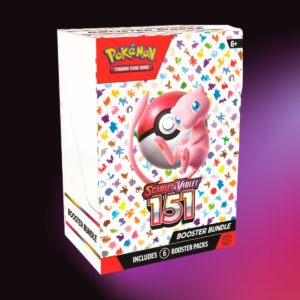Concrete Contractors provide expert services in the construction industry, bringing concrete expertise to projects. They have deep knowledge of concrete properties and techniques, allowing them to create durable and visually appealing structures that meet design specifications.
When choosing a concrete contractor, look for the following qualities:
Concrete is a very specific construction material, and finding contractors with experience in your type of project is essential. Whether you are looking for decorative or structural concrete work, choosing an experienced contractor will ensure that your project is completed correctly and that the results will be satisfactory.
Ask your potential contractor how long they have been in business and how many projects they have worked on similar to yours. A reputable concrete contractor will be able to provide you with references from previous clients who can testify to their skills and level of professionalism. You should also consider asking the contractor to provide you with a detailed project timeline outlining the start and end dates of each phase of your project. This will help you plan your schedule more effectively and reduce the risk of unforeseen delays.
Passion for the Craft
The best concrete contractors are not only experts in their field, but they truly love what they do. This passion is what drives them to create beautiful and functional concrete structures that will last for years to come. A contractor who does not demonstrate this level of enthusiasm may be a sign that they are unqualified for your project.
In addition to evaluating a potential contractor’s technical skills, you should also assess their ability to communicate effectively and meet deadlines. Effective communication is critical to ensuring that your project runs smoothly, so it is important to choose a contractor with strong customer service values. You can gauge a contractor’s ability to communicate effectively by requesting client testimonials and reviewing public reviews on Google, Yelp, Facebook, and Angi.
When interviewing potential concrete contractors, it is also a good idea to ask them about their pricing structure. This will give you an idea of how much their services cost and help you decide which one is the right fit for your budget. Make sure that you discuss any potential hidden fees or costs upfront so that there are no misunderstandings during the project.
You should also find out if the contractor has insurance coverage and what kind of warranty they offer. This will protect you if there is an accident on the job site and ensure that the contractor will be able to address any issues that may arise.
Passion for the Craft
Concrete contractors work hard to bring your construction vision to life. They take ideas, plans, and specifications and turn them into concrete masterpieces that stand the test of time.
In this industry, passion is everything. Contractors who love what they do find fulfillment in creating something lasting and beautiful. Their dedication to the craft inspires them to continue to learn, grow, and innovate.
The best concrete contractors are always seeking out opportunities to expand their knowledge and improve the quality of their work. They attend trade shows, seminars, and conferences to keep up with the latest developments in the concrete industry. They know that it’s crucial to keep their skills up-to-date so they can stay competitive and offer their clients the highest level of service.
If you’re looking for a contractor who is passionate about their work, make sure to ask about their education and certifications. You want a concrete contractor who is licensed, insured, and has years of experience. You’ll also want to check out their portfolio of past projects and references.
A great contractor will understand your needs and communicate clearly to ensure you get the results you want. Concrete projects like flooring, foundations, driveways, and patios could entail highly technical details that need to be explained in a way you can understand. If a contractor doesn’t communicate well, it can be easy to misunderstand their instructions and lead to an unsatisfactory result.
Concrete professionals come equipped with tools and manpower that allow them to complete projects more quickly than those who try to tackle the job themselves. They also have in-depth industry expertise gained from hundreds or even thousands of projects, ensuring that your project is done right the first time.
A professional concrete contractor will use safety protocols to ensure a safe worksite. By following these guidelines, they minimize the risk of accidents and injuries on the job site, saving you valuable time. They also ensure that their employees are trained in the proper handling of materials to avoid costly mistakes. This saves you money on labor costs, and allows you to enjoy your new concrete features sooner.
Commitment to Quality & Safety
Concrete is the backbone of countless construction projects around the world. Commercial concrete work is a highly specialized and meticulous process that requires a high level of skill to ensure that the final product meets project specifications. This is where Concrete Contractors come in.
Before concrete work begins, a concrete contractor will create a detailed plan to ensure that the project is completed in a timely and cost-effective manner. This planning stage includes assessing the scope of the project, reviewing the material requirements and scheduling. A comprehensive quality control program is then implemented to minimize costly mistakes. This includes:
A concrete contractor must also be dedicated to the safety of themselves and their employees. This involves regularly training and retraining personnel, conducting safety inspections, and ensuring that all safety procedures are followed. If a supervisor notices that a worker has not been wearing the proper safety equipment, they must be prepared to give them corrective feedback. A concrete contractor that takes safety seriously will have the confidence to do this, as it is essential for keeping workers safe.
Once the concrete is poured, a concrete contractor will monitor the curing process to ensure that it achieves the desired temperature and consistency. They will then apply a sealant to protect the concrete from moisture, stains and wear, which extends the life of the surface. Finally, they will clean up the work area and dispose of any waste.
Working with a professional concrete contractor is essential for any construction project. They have the expertise and experience to handle every aspect of a concrete project, from planning and design to installation and maintenance. They can save you time and money by streamlining the project process, reducing site errors, and providing accurate and timely estimates.
The Right Equipment
When working with concrete, having the right tools is essential. A quality arsenal can enhance precision and efficiency, cutting down on labor time. Ask potential contractors about the types of power tools they use, and their preference for specific brands or models. Also, make sure they have the proper first aid supplies on hand. This should include pH neutral soap, clean towels and several gallons of clean water for flushing eyes if they come into contact with concrete.
In addition to basic power tools, the right contractor will have access to heavy equipment necessary for larger concrete projects. Ask about the types of machines they own and use, including telehandlers, boom lifts and scissor lifts. These are often used for placing and moving large amounts of concrete, but can also be utilized to work at heights after the concrete is poured.
Lastly, it’s important to ensure that the commercial concrete contractor you choose adheres to local building codes. This will help ensure the project’s safety and longevity. Ask the contractor about their approach to compliance and how they keep up to date with local regulations.
Ask for references from past clients. Satisfied customers are often willing to share their experiences, providing valuable insights into the contractor’s professionalism and customer service. Additionally, look at online reviews and ratings from other customers to get a feel for the company’s reputation.
Discuss the types of projects the contractor has worked on in the past and their corresponding sizes and complexity. An impressive portfolio can be a good indicator of the quality and versatility of a contractor’s skills.
If you are looking for a trusted and experienced contractor to tackle your next concrete construction project, we would be happy to help! Our team of experts are dedicated to providing the highest quality of service and will work closely with you throughout the entire process. Please don’t hesitate to reach out for more information or to schedule a free consultation with one of our concrete specialists. We look forward to hearing from you soon!






